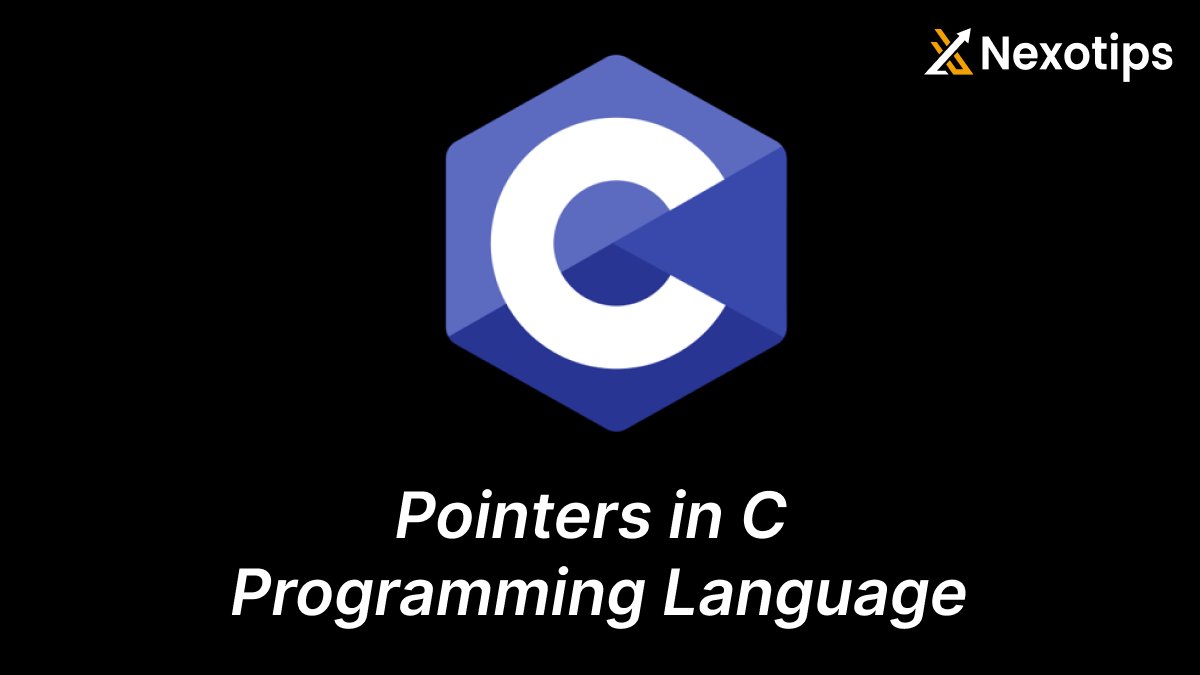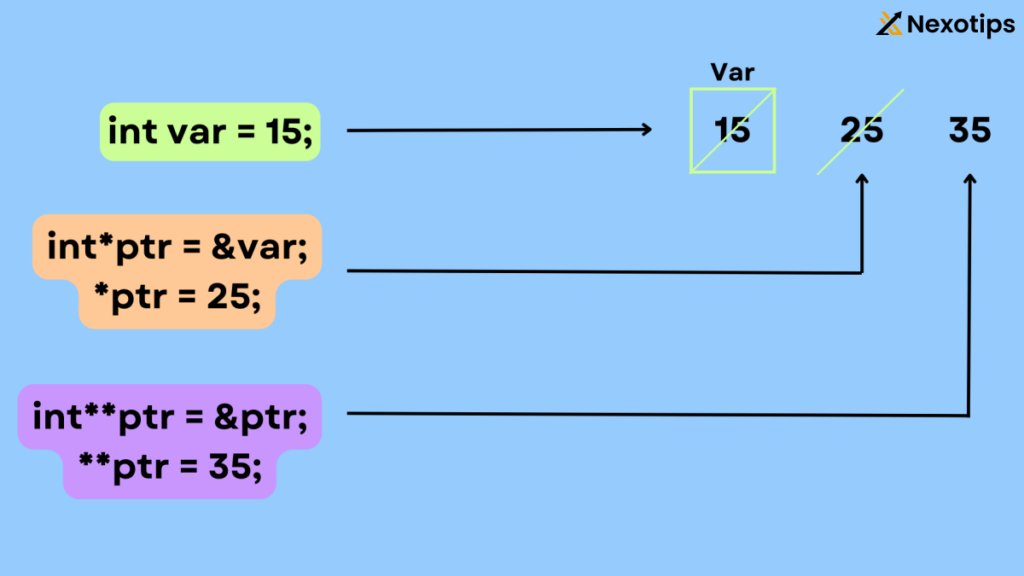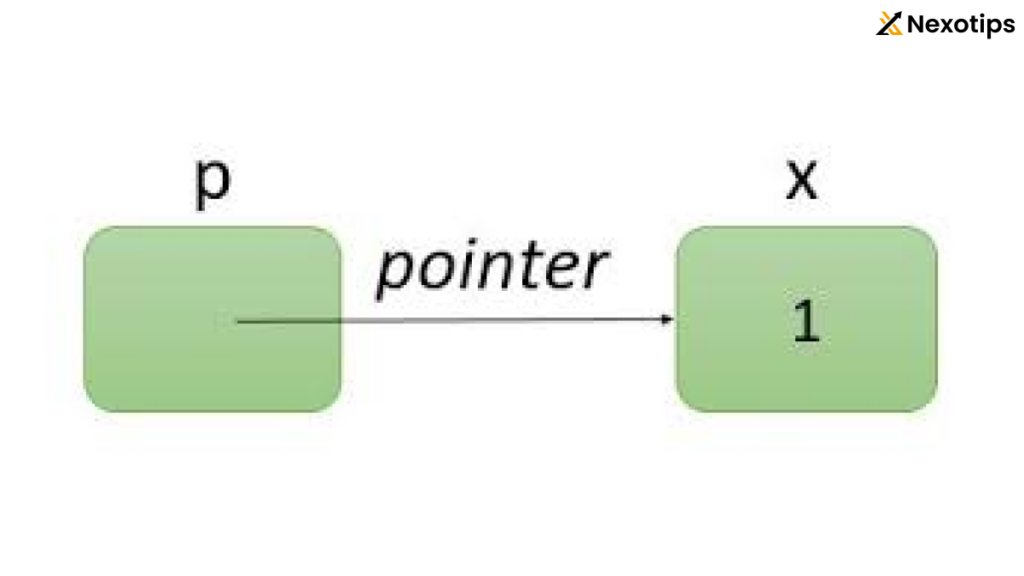
Understanding Pointers in C: A Best Guide.
Pointers in C
Pointers are one of the most powerful and complex features of the C programming language. They enable direct memory access and manipulation, which can lead to highly efficient and optimized code. However, with great power comes great responsibility. Misusing pointers can lead to bugs that are difficult to trace, such as memory leaks and segmentation faults. In this comprehensive guide, we will explore the intricacies of pointers in C, covering their definition, usage, advantages, and common pitfalls. By the end of this blog, you’ll have a thorough understanding of pointers and how to use them effectively in your C programs.
Index of Contents
What are Pointers?
A pointer is a variable in C that holds the address of another variable in memory. Instead of holding a data value directly, a pointer holds the address where the data value is stored. This ability to reference memory addresses allows pointers to play a crucial role in dynamic memory allocation, arrays, functions, and data structures like linked lists and trees.
Pointer Declaration
To declare a pointer, you use the asterisk (*) symbol before the pointer variable’s name. Here’s the syntax:
data_type *pointer_name;For example, to declare a pointer to an integer, you write:
int *ptr;Here, ptr is a pointer to an integer. It is capable of storing an integer variable’s address.

Pointer Initialization
A pointer must be initialized before it is used. Using the address-of operator (&), you can initialize a pointer by giving it the address of a variable:
int num = 10;
int *ptr = #In this example, ptr holds the address of the variable num.
Dereferencing Pointers
Dereferencing a pointer means accessing the value stored at the memory address the pointer is pointing to. To dereference a pointer, you use the asterisk (*) operator again:
int value = *ptr;Here, value will be assigned the value stored at the address held by ptr, which is 10 in this case.
Benefits of Using Pointers
Pointers offer several advantages in C programming:
- Efficient Memory Management: Pointers allow for dynamic memory allocation, enabling the creation of data structures like dynamic arrays and linked lists that can grow and shrink at runtime.
- Function Arguments: Pointers enable functions to modify variables outside their local scope, allowing for more flexible and efficient code.
- Array and String Handling: Pointers provide a convenient way to work with arrays and strings, as they allow for direct manipulation of memory.
- Performance Optimization: Pointers can lead to faster execution times by avoiding the need to copy large amounts of data.
Common Uses of Pointers
Pointers and Arrays
An array’s name in C serves as a pointer to the array’s first element. This relationship allows you to use pointers to iterate through an array efficiently.
int arr[] = {1, 2, 3, 4, 5};
int *ptr = arr;
for (int i = 0; i < 5; i++) {
printf("%d ", *(ptr + i));
}Here, ptr is a pointer to the first element of arr, and the loop prints each element of the array.
Pointers and Strings
In C, a string is an array of characters that ends with the null character (\0). Pointers can be used to manipulate strings effectively.
char str[] = "Hello, World!";
char *ptr = str;
while (*ptr != '\0') {
printf("%c", *ptr);
ptr++;
}In this example, ptr points to the first character of the string, and the loop prints each character until the null character is reached.
Pointers and Functions
Pointers can be used to pass large structures or arrays to functions without copying them, improving performance.
void updateValue(int *ptr) {
*ptr = 20;
}
int main() {
int num = 10;
updateValue(&num);
printf("%d", num); // Outputs 20
return 0;
}Here, the updateValue function takes a pointer to an integer and updates the value at that address.
Dynamic Memory Allocation
In C, pointers are necessary for the dynamic allocation of memory. Functions like malloc, calloc, realloc, and free from the <stdlib.h> library are used to allocate and deallocate memory at runtime.
int *ptr = (int *)malloc(sizeof(int) * 5);
if (ptr == NULL) {
printf("Memory allocation failed!");
return 1;
}
// Use the allocated memory
for (int i = 0; i < 5; i++) {
ptr[i] = i + 1;
}
free(ptr); // Deallocate memoryIn this example, malloc allocates memory for an array of 5 integers, and free deallocates the memory.
Common Pitfalls with Pointers
While pointers are powerful, they can also be the source of various bugs and issues if not used correctly. Here are some common pitfalls to avoid:
Uninitialized Pointers
Using a pointer without initializing it can lead to undefined behavior, as it may point to an arbitrary memory location.
int *ptr;
*ptr = 10; // Undefined behaviorDangling Pointers
A pointer that points to a deallocated or deleted memory address is known as a dangling pointer.
int *ptr = (int *)malloc(sizeof(int));
*ptr = 10;
free(ptr);
*ptr = 20; // Undefined behaviorMemory Leaks
Failing to free dynamically allocated memory can lead to memory leaks, where memory is not returned to the system, eventually exhausting available memory.
int *ptr = (int *)malloc(sizeof(int) * 5);
// Forgetting to free the allocated memoryPointer Arithmetic
Pointer arithmetic can be useful but must be used with care. Adding or subtracting integers from pointers should only be done when working with arrays.
int arr[] = {1, 2, 3, 4, 5};
int *ptr = arr;
ptr += 2; // Points to the third elementNull Pointers
A pointer that points to no memory location is called a null pointer. It is good practice to check for null pointers before dereferencing them.
int *ptr = NULL;
if (ptr != NULL) {
*ptr = 10;
}
Advanced Pointer Concepts
Pointer to Pointer
One type of multiple indirection or chain of pointers is a pointer to a pointer. It is a pointer that points to another pointer.
int num = 10;
int *ptr = #
int **ptr2 = &ptr;
printf("%d", **ptr2); // Outputs 10Function Pointers
Function pointers allow you to store the address of a function and call it through the pointer. This is useful for implementing callback functions and designing flexible APIs.
void displayMessage() {
printf("Hello, World!");
}
void (*funcPtr)() = displayMessage;
funcPtr(); // Calls displayMessagePointers and Structures
Pointers can be used with structures to create complex data structures like linked lists, trees, and graphs.
struct Node {
int data;
struct Node *next;
};
struct Node *head = NULL;Best Practices for Using Pointers
- Initialize Pointers: Always initialize pointers before using them.
- Check for Null: Check if a pointer is null before dereferencing it.
- Avoid Dangling Pointers: Ensure pointers are not used after the memory they point to has been freed.
- Free Dynamically Allocated Memory: Always free memory that has been dynamically allocated.
- Use Pointer Arithmetic Carefully: Be cautious when using pointer arithmetic to avoid accessing out-of-bounds memory.
Pointers are an integral part of the C programming language, offering powerful capabilities for memory management and efficient code execution. While they can be challenging to master, understanding and using pointers effectively can greatly enhance your programming skills. By following best practices and avoiding common pitfalls, you can harness the full potential of pointers in your C programs. Whether you’re working with arrays, strings, dynamic memory, or complex data structures, pointers provide the flexibility and control needed for efficient and optimized code.
In this comprehensive guide, we’ve covered the basics of pointers, their benefits, common uses, pitfalls, advanced concepts, and best practices. By applying this knowledge, you’ll be well-equipped to tackle any programming challenge that involves pointers in C.
Nexotips: Your Trusted Partner in E-commerce Development
At Nexotips, we understand the complexities of e-commerce and have a proven track record of delivering tailored solutions that drive business growth. With over 5 years of experience, our team of experienced developers is well-versed in creating robust, scalable e-commerce platforms that meet your unique requirements. Whether you’re launching a new online store or enhancing an existing one, we’re committed to providing innovative solutions and exceptional service.
This outline sets the stage for a detailed exploration of each aspect, culminating in a strong endorsement of Nexotips as the ideal partner for e-commerce development. Let me know if you’d like to proceed with this structure or if there are any adjustments you’d like to make!
Others: Memory Address In C: A Comprehensive Guide.
